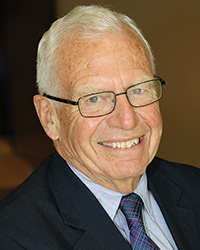
Kirk&Company
New Year’s resolutions. Newly minted constituencies. Healthcare, education and care. And the caregivers, teachers and elderly are at the top of the list. The national Centers for Disease Control have recommended the essential caregivers and vulnerable elderly receive the initial vaccinations. State jurisdictions have suggested teachers receive priority or secondary spots as well. These constituents and their built environments will receive the long-deserved attention and need. Healthcare has pushed into the real property category and demand for services has been clearly monetized and analyzed. Education and vulnerable populations have more mixed demand and supply patterns in the local property markets.
Traditional eleemosynary uses are the highest and best use increasingly, and in some markets, no longer elude monetizing measures. Commercial real estate and the professions that support the sector must embrace the essential needs and mission of the community. The foundations of communities are the foundations of property markets. Eleemosynary purposes and uses are high in contributory value to environmental and sustainability objectives of community development. Resilience is dependent upon these priorities, and the mission must survive the pandemic and be long lasting. Eleemosynary purposes and uses must be better integrated in mainstream planning and development of infrastructure and new construction and adaptive reuse. Front and center and less ad hoc.
Commercial real estate is an economic derivative and its performance is dependent upon fundamental underlying economic trends. Often linked directly to cyclical economic trends, commercial real estate has always been dependent upon the local balance of supply and demand of related inventory in the market. Further, and less pronounced, commercial real estate has been directly dependent on behavioral and sector changes in the local economy. These priorities will be among the lasting impacts of the pandemic and a timely occurrence.
Marked changes in mobility and transit ridership are additional significant measures of the pandemic and hopefully temporal and more transient. Primary research and analysis of pre-pandemic trends like burdens of commutation, virtual meeting, working and shopping, doing more outdoors, already were impacting demand. The pandemic necessitated more, eclipse-like, adding momentum and permanence to evolving behaviors. Trends in home fitness, entertainment and workspaces have migrated from hospitality to business and residential sector permanently.
Technology’s bursting roadways similarly have added momentum and permanence to impact demand. Modifications to the built environment and functional obsolescence were already causing changes to supply. The outliers are now mainstream. Mobility has increasingly evolved from impact of Uber, Zip Car, motorized two wheelers and related transportation motive modes. Walking and jogging have lifted pedestrian traffic and pathways.
The built environment has evolved sluggishly over time. The pandemic has brought focus to the failures, the omissions and the overlooked parts of the built environment. The pandemic induced protocols, services, updates and connectivity should become the new norm and prospect of robust spending on infrastructure should defined to include these lessons.
David Kirk is founder and chief executive officer of Kirk&Company, Real Estate Counselors, Boston.








